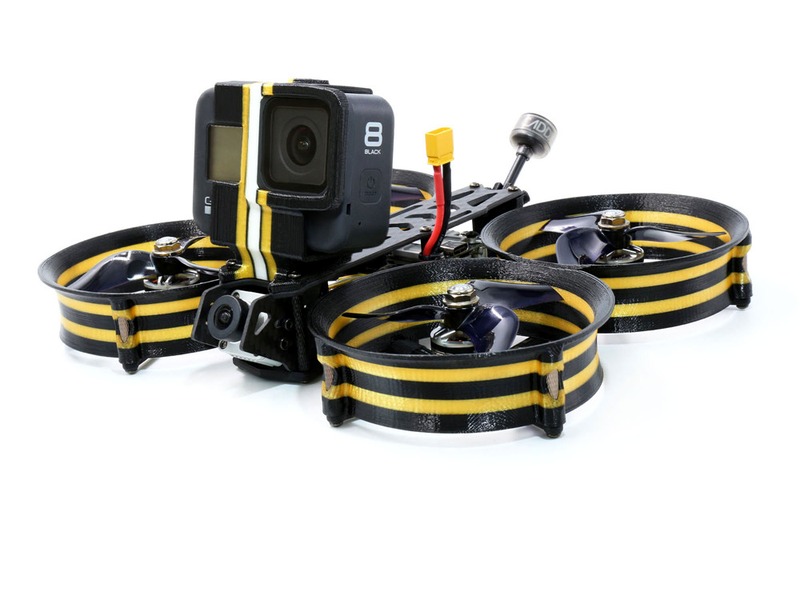What are the 4 types of drones?

Drones are unmanned aerial vehicles (UAVs) used for a variety of purposes, including reconnaissance, surveillance, photography, mapping, and even delivery of goods. Drones come in a variety of shapes and sizes, and can be categorized into four main types: fixed-wing, multi-rotor, hybrid, and single-rotor.
Fixed-wing drones are the most common type of drone, often used for long-distance flights. These drones have wings, like a traditional aircraft, and are powered by an electric motor. They are capable of flying for longer distances and at higher altitudes than other types of drones. Fixed-wing drones are also the most expensive type of drone.
Multi-rotor drones are the most popular type of drone. They are powered by multiple rotors that work together to create lift and propulsion. These drones are often used for aerial photography and videography, as they have the ability to hover in place and move in any direction. Multi-rotor drones are typically more affordable than fixed-wing drones and can be used for a variety of applications.
Hybrid drones are a combination of fixed-wing and multi-rotor drones. These drones are capable of taking off and landing like a multi-rotor drone, and transitioning to a fixed-wing flight once airborne. Hybrid drones are typically used for long-distance flights and are more expensive than other types of drones.
Single-rotor drones are the least common type of drone. These drones are powered by a single rotor and are used for very specific applications, such as surveying or mapping. Single-rotor drones are typically the most affordable type of drone, but have limited capabilities compared to other types of drones.
In conclusion, there are four main types of drones: fixed-wing, multi-rotor, hybrid, and single-rotor. Each type of drone has its own unique advantages and disadvantages, and can be used for a variety of applications. Before purchasing a drone, it is important to consider the application it will be used for and the type of drone that is best suited for that application.
Comments / Question
2. Check the airspace for other aircraft before flying.
3. Stay away from airports, military bases, and other restricted areas.
4. Follow all applicable laws and regulations.
5. Fly the drone in an area with no people or animals.
6. Have a spotter to watch the drone as it flies.
7. Maintain visual contact with the drone at all times.
8. Be aware of the drone’s battery life and land the drone before it runs out of power.
9. Keep the drone away from power lines and other obstacles.
10. Do not fly the drone over crowds.
2. Commercial Drones: These drones are used in many industries, from agriculture to construction, inspection, and security. They are able to carry heavier payloads and are generally equipped with advanced sensors and cameras that can acquire data and produce real-time imagery.
3. Industrial Drones: These drones are used in hazardous environments and extreme locations such as mining sites and oil rigs. They are equipped with more advanced features, such as the ability to inspect infrastructure and monitor safety protocols.
4. Military Drones: These unmanned aerial vehicles (UAVs) are used by the military and government organizations for surveillance, reconnaissance, intelligence gathering, and combat missions. Their features are highly sophisticated and often not available to the public.
Advantages:
- Easy to fly and maneuver
- Low cost
- Versatile and can be used for a variety of tasks
- Lightweight and compact
Disadvantages:
- Limited range and flight time
- Limited payload capacity
- Susceptible to wind
Fixed-Wing:
Advantages:
- Longer range and flight time
- Greater payload capacity
- More efficient and faster than quadcopters
Disadvantages:
- More difficult to fly and maneuver
- More expensive
- Larger and heavier than quadcopters
2. Commercial Drones: Commercial drones are used for aerial photography, mapping and surveying, agricultural monitoring, search and rescue, environmental monitoring, scientific research, and package delivery.
3. Hobbyist Drones: Hobbyist drones are used primarily for recreational purposes such as aerial photography, aerial video recording, and racing.
4. Unmanned Aerial Vehicles (UAVs): UAVs are used for a variety of applications including surveillance, reconnaissance, target acquisition and destruction, communications relay, search and rescue, and payload delivery. They can also be used for commercial purposes such as aerial photography, mapping and surveying, agricultural monitoring, search and rescue, environmental monitoring, scientific research, and package delivery.
2. Multirotor drones - Multirotor drones are powered by multiple rotors, usually four or more, that enable them to hover and fly in any direction. They are generally cheaper and easier to operate than fixed-wing drones, however, they are limited in the amount of time they can stay in the air and the maximum speed they can reach.
3. Hybrid drones - Hybrid drones combine the features of both fixed-wing and multirotor drones and are able to take off and land vertically, like a multirotor, but also have the speed and range of a fixed-wing drone. They are more expensive and more complicated to operate than both fixed-wing and multirotor drones.

